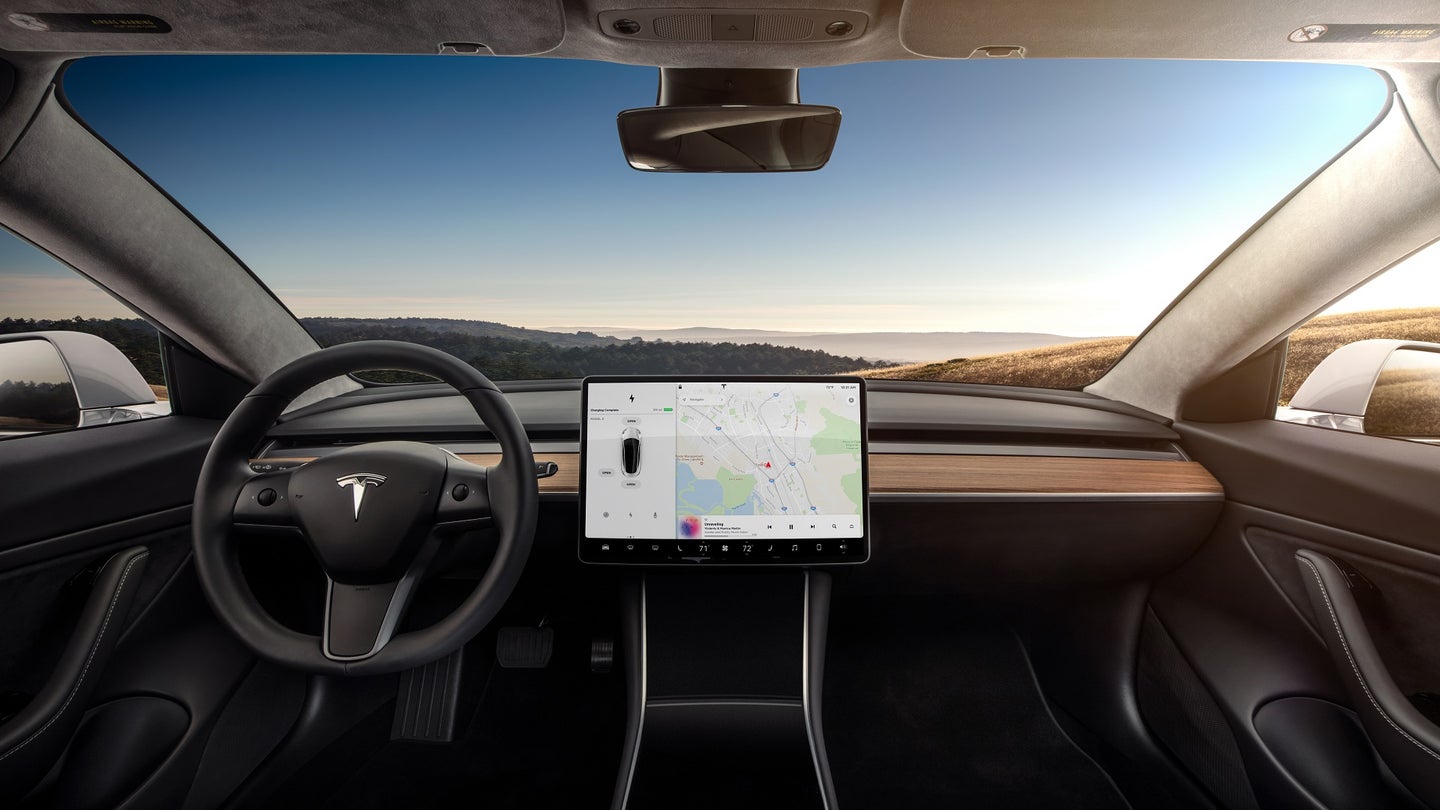The Evolution of the Car Interior
Digital gauge clusters are popular, but don’t touch that volume dial.

Crank windows and column shifters have all but disappeared from modern cars, and most people don't miss them. But take away that volume knob, or even the CD player even though most people don't use them anymore, and drivers are all up in arms. Automotive News makes an interesting comparison of the latest car interior trends, what works, and what doesn't.
By far, the biggest complaint people seem to have about the "progress" of interior automotive design is the replacement of the tried-and-true volume knob with a touchscreen or capacitive controls. It is doubtful that any modern volume control is attached directly to the variable resistor that prompted the design of the original dial decades ago. But old habits die hard, and our first reaction when we want to change the volume is to reach for that dial. It's so ingrained that we don't even have to take our eyes off the road to do it. The same can't be said of looking for the right spot on the touchscreen. Plus, as many of us have learned on our smartphones, capacitive touch controls don't work with gloves unless the fingertips have special pads just for them. That's why the volume knob has been making a big comeback on new models, including the latest Honda CR-V and Accord.
Another controversial change has been new shifter designs that have confused some drivers. Automakers have branched out from the traditional PRNDL levers to new designs. Some of them seem to work rather well, such as the GMC Terrain's
pushbutton and toggle switch shifter. Others, like Fiat-Chrysler's "Monostable" shifter, were so poorly received that over a million Jeep, Dodge, and Chrysler vehicles were recalled after actor Anton Yelchin died when he failed to put his Jeep Grand Cherokee into Park properly.
Less of a safety hazard, but also controversial, is the omission of CD players from some infotainment systems. Despite the fact that most people no longer use CDs in cars, many of the same people still want the option, and won't buy cars not equipped with them. Some manufacturers, such as Volkswagen, have moved the CD player to the glove box, which retains the feature while still allowing space for a bigger touchscreen.
Similarly, drivers still demand climate controls that are easy to operate. Subaru, which has been reluctant to move away from traditional buttons and knobs, has one of the better climate control systems out there, with three large dials and buttons within them to control air conditioning, defoggers, and so on. Yet despite the simple controls, I find myself leaving my WRX climate controls in automatic mode since they do a good job keeping the interior comfortable on their own.
Other relatively new features have been rather well accepted. Push button start has been widely accepted for its convenience. Some cars, such as the Ford Mustang, don't even offer the old-fashioned physical key as an option, most likely because it's less expensive to standardize on push button start across all models. Digital gauge clusters once offered only in high-end luxury cars, have trickled down to vehicles for the masses such as the Toyota Prius and Volkswagen Atlas. Many of these still offer a traditional needle-like gauge display but are ripe for innovation as well, with multiple display options depending on the driver's preference.
Modern cars are far less dependent on physical connections between the controls and the transmission, handbrake, or whatever it is they are controlling. This opens the floodgates for innovation of new and interesting user interfaces. Some will work, and some won't. We are rapidly approaching a point where the automotive interior design will more closely resemble designing a user interface for a computer program than the controls for driving a car. Let's hope the designers choose wisely.
